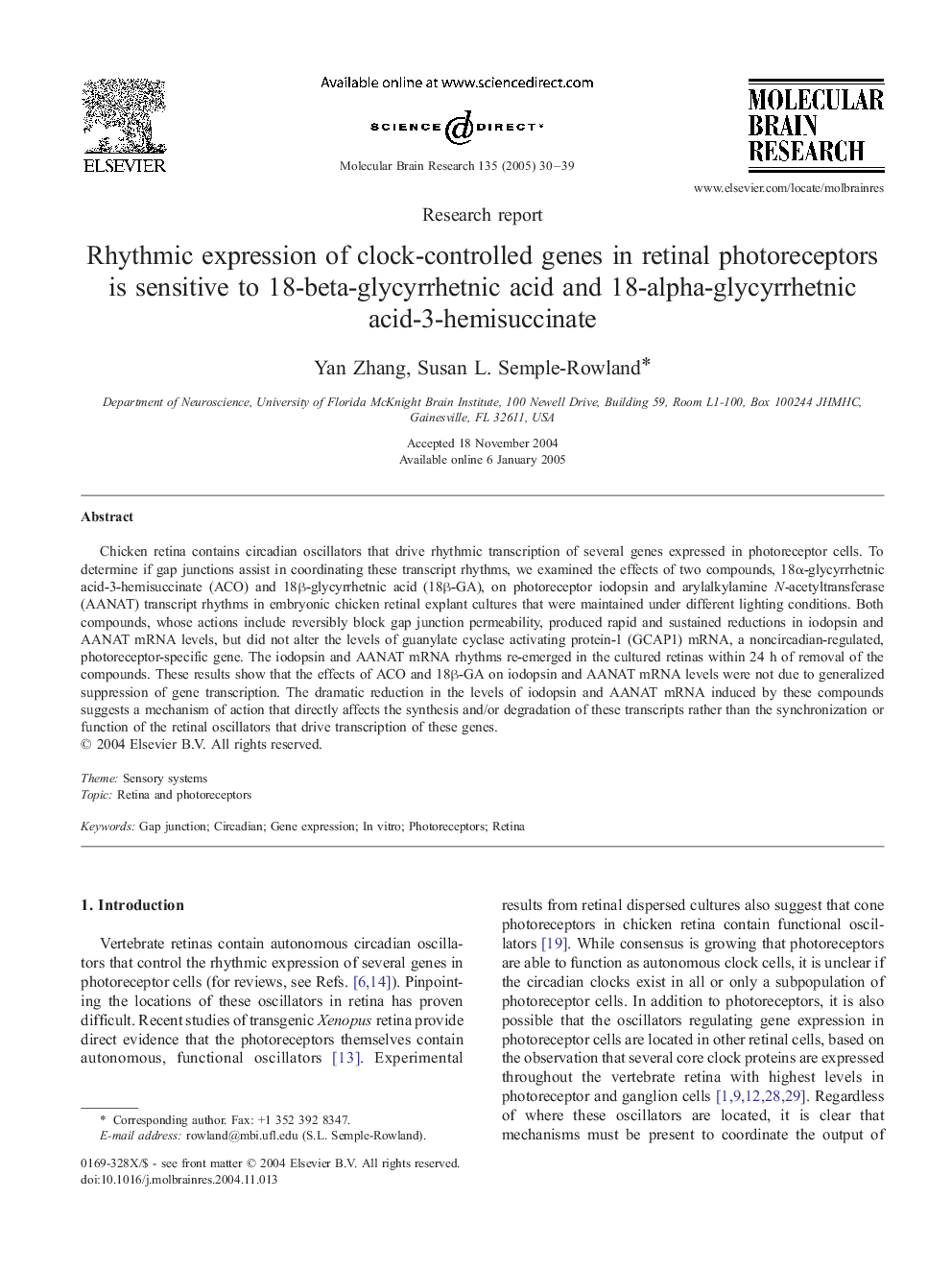| Article ID | Journal | Published Year | Pages | File Type |
|---|---|---|---|---|
| 9410664 | Molecular Brain Research | 2005 | 10 Pages |
Abstract
Chicken retina contains circadian oscillators that drive rhythmic transcription of several genes expressed in photoreceptor cells. To determine if gap junctions assist in coordinating these transcript rhythms, we examined the effects of two compounds, 18α-glycyrrhetnic acid-3-hemisuccinate (ACO) and 18β-glycyrrhetnic acid (18β-GA), on photoreceptor iodopsin and arylalkylamine N-acetyltransferase (AANAT) transcript rhythms in embryonic chicken retinal explant cultures that were maintained under different lighting conditions. Both compounds, whose actions include reversibly block gap junction permeability, produced rapid and sustained reductions in iodopsin and AANAT mRNA levels, but did not alter the levels of guanylate cyclase activating protein-1 (GCAP1) mRNA, a noncircadian-regulated, photoreceptor-specific gene. The iodopsin and AANAT mRNA rhythms re-emerged in the cultured retinas within 24 h of removal of the compounds. These results show that the effects of ACO and 18β-GA on iodopsin and AANAT mRNA levels were not due to generalized suppression of gene transcription. The dramatic reduction in the levels of iodopsin and AANAT mRNA induced by these compounds suggests a mechanism of action that directly affects the synthesis and/or degradation of these transcripts rather than the synchronization or function of the retinal oscillators that drive transcription of these genes.
Keywords
Related Topics
Life Sciences
Neuroscience
Cellular and Molecular Neuroscience
Authors
Yan Zhang, Susan L. Semple-Rowland,
